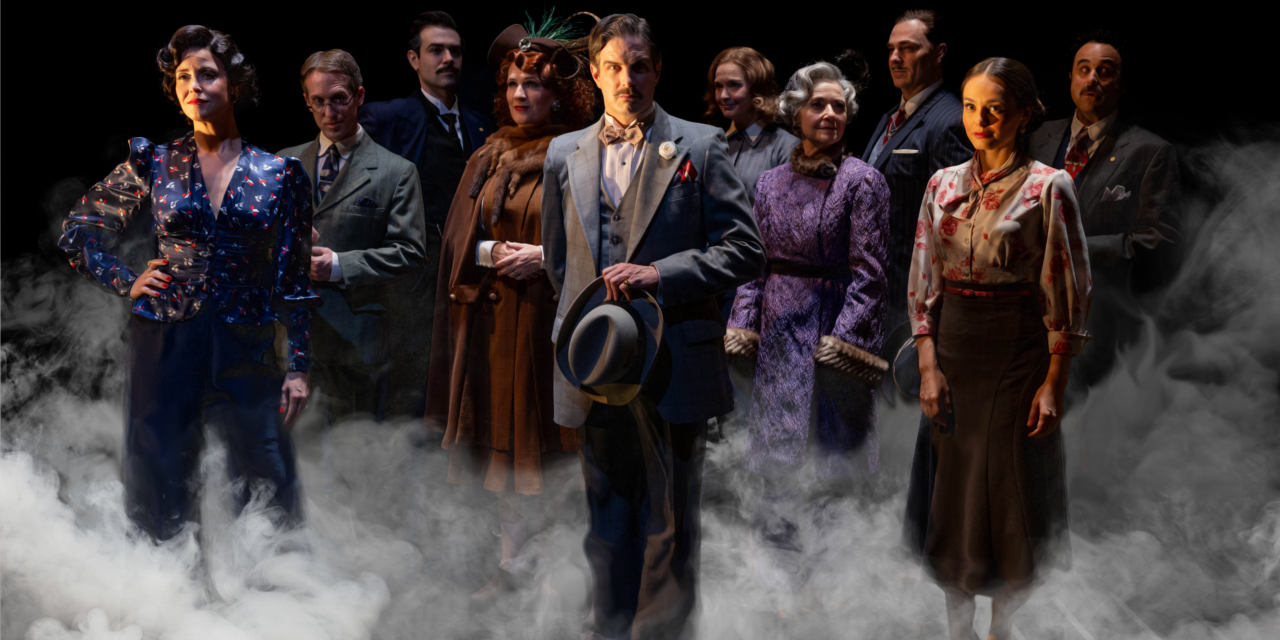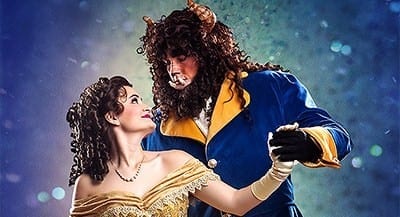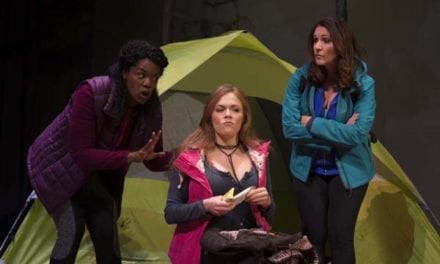SALT LAKE CITY — Peeling back the layers of design, dialogue and character in a mystery is both the challenge and the thrill of making and seeing such a production. As director Melissa Rain Anderson states in her director’s note, “only a live performance can truly grasp the heartbeat of the events depicted. Even if you are familiar with Murder on the Orient Express, there are so many sly nuances woven throughout that you cannot help but be swept away into this beloved caper. Time is compressed and it’s a race to the finish line to solve the case.” I have rarely seen a director hit their own target with such precision. This excellent adaptation by Ken Ludwig lived up to its billing with a powerful blend of mysterious intrigue, timeless wit, and high stakes drama that kept my attention rapt from start to finish.
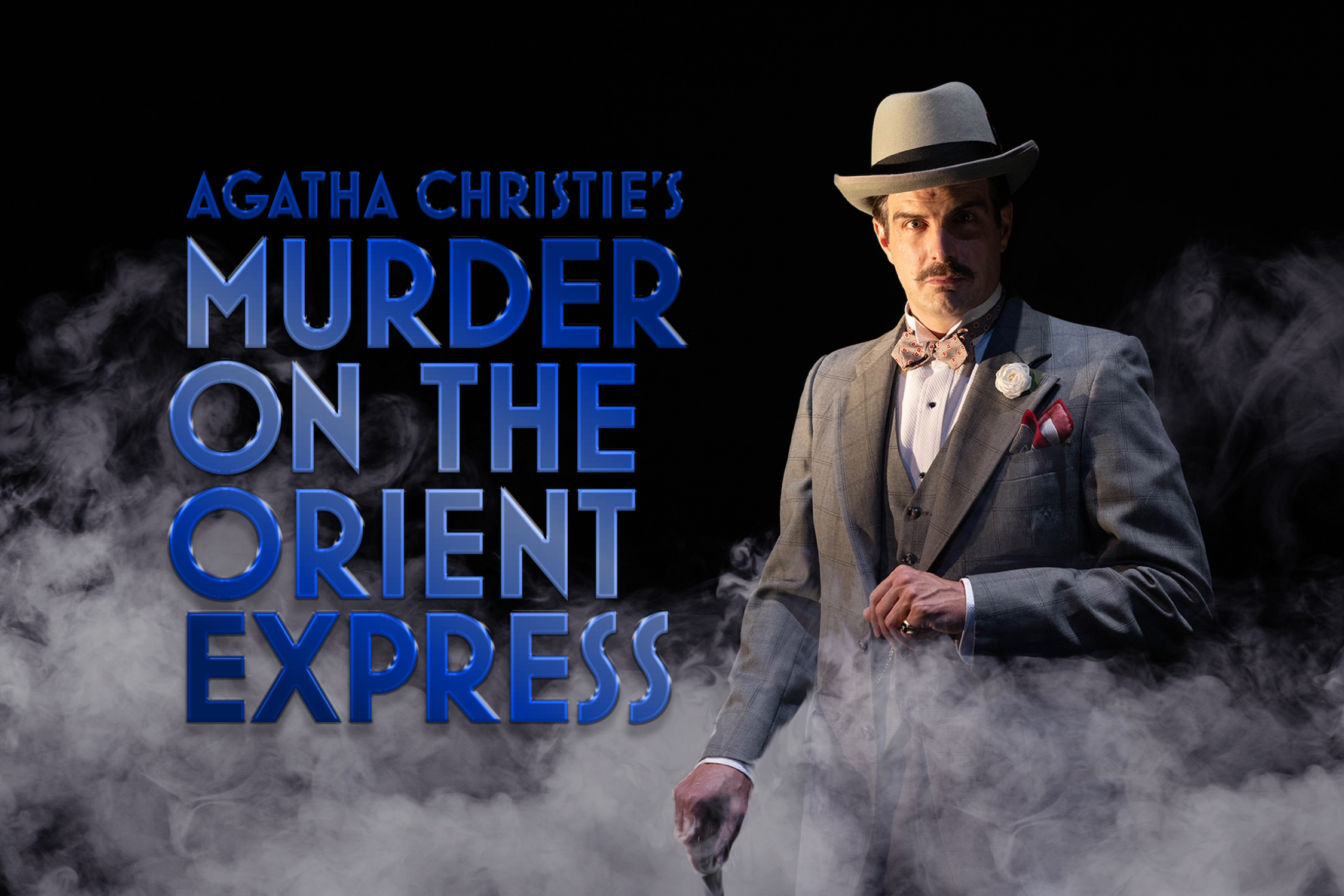
Show closes October 7, 2023.
The play opens with a sort of radio drama depicting the parents of Daisy Armstrong putting her to bed on the night she is murdered. The set was ominously lit with a rocking horse stage right to indicate the first crime that set the play’s action into motion. Narrative dialogue of Daisy calling out tragically for her parents as she screamed seemed to blend into a train whistle and set the stakes for the play’s tension. However, in the next scene John Tufts steps out wearing the iconic Hercule Poirot accoutrement, breaks the fourth wall, and tells the audience “Romance and tragedy, primal murder and the urge for revenge,” are a pleasant way to spend an evening together. Throughout the play, the dramatic shifts of chilling tension and expert comedic timing are revealed bit by bit as the play arrives at its final dramatic question about who has the right and responsibility of serving justice.
The play’s technical aspects were as interesting as the acting and directing. Jason Simms designed a set that made use of false prosceniums to set the opening sequence in an ostentatious hotel cafe, but transitioned impressively into a moving train passing through the snowy Alps while staying on the Simmons Pioneer Memorial Theatre stage. The set was both practical in showing train compartments side by side, and a marvel to watch the movement of the train cars from stage left to stage right as action moved from carriage to carriage. Jaymi Lee Smith’s lighting design cleverly highlighted specific moments in the play. During the final summation, Poirot recalls moments from the play and key pieces of evidence characters had given through the play. When these were brought up, actors were highlighted in precise azure spots as they rattled off core details — and the lights then immediately went out. The effect was clear and concise. Throughout the play, lights told the story of the train moving, set the central ambiance, and at times highlighted key moments, such as the play’s title murder on the Orient Express.
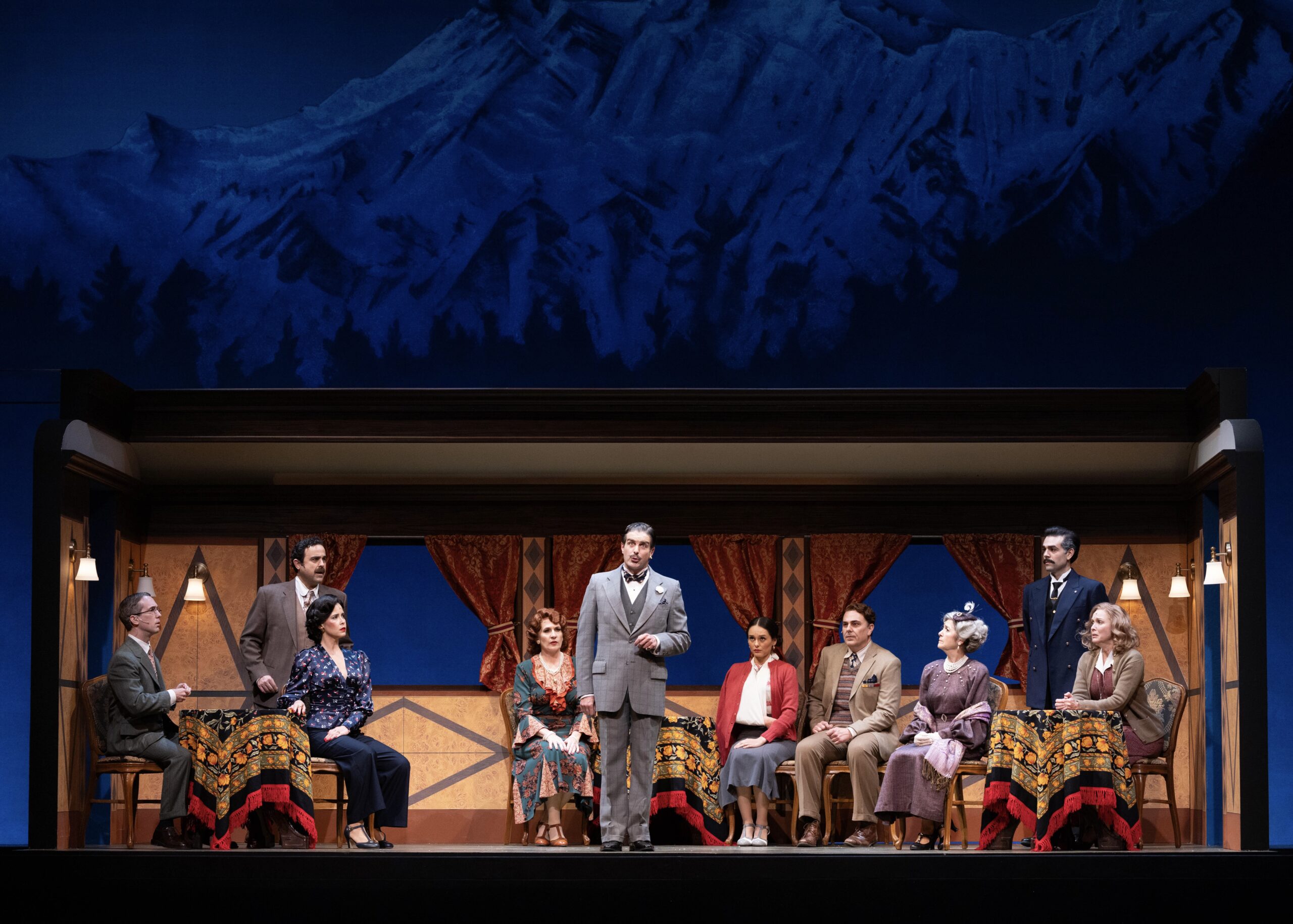
The Cast of Murder on the Orient Express. Photo by BW Productions.
The cast was strong from engine to caboose, especially Tufts as Poirot. Tufts had the unenviable task of recreating a character beloved in literature and played by world-renowned performers, including the iconic David Suchet and (more recently) Kenneth Branagh. Yet, Tufts measured up well to the little Belgian’s legacy. Tufts carried the calm demeanor of Poirot while still commanding all around him when necessary. Most powerful of all was his final monologue when the play ends, as he reflects on what a miscarriage of justice looks like. While the play had a full head of steam through most of the production, Tufts took his time to let difficult questions simmer before the final curtain.
I was similarly taken with Anne Tolpegin as Helen Hubbard, a character who is a façade on top of a façade. Hubbard pretends to be a Minnesota dame with a penchant for finding the wrong man, only to find another, wealthier, husband. Tolpegin played up these hilarious archetypes with a strong Northern accent as shamelessly flirts with Michael the Conductor (played by Alec Ruiz). When her character’s secrets are revealed, Tolpegin quickly becomes cold and calculating in a way that demonstrates the dynamic performance range that the character is purported to have.
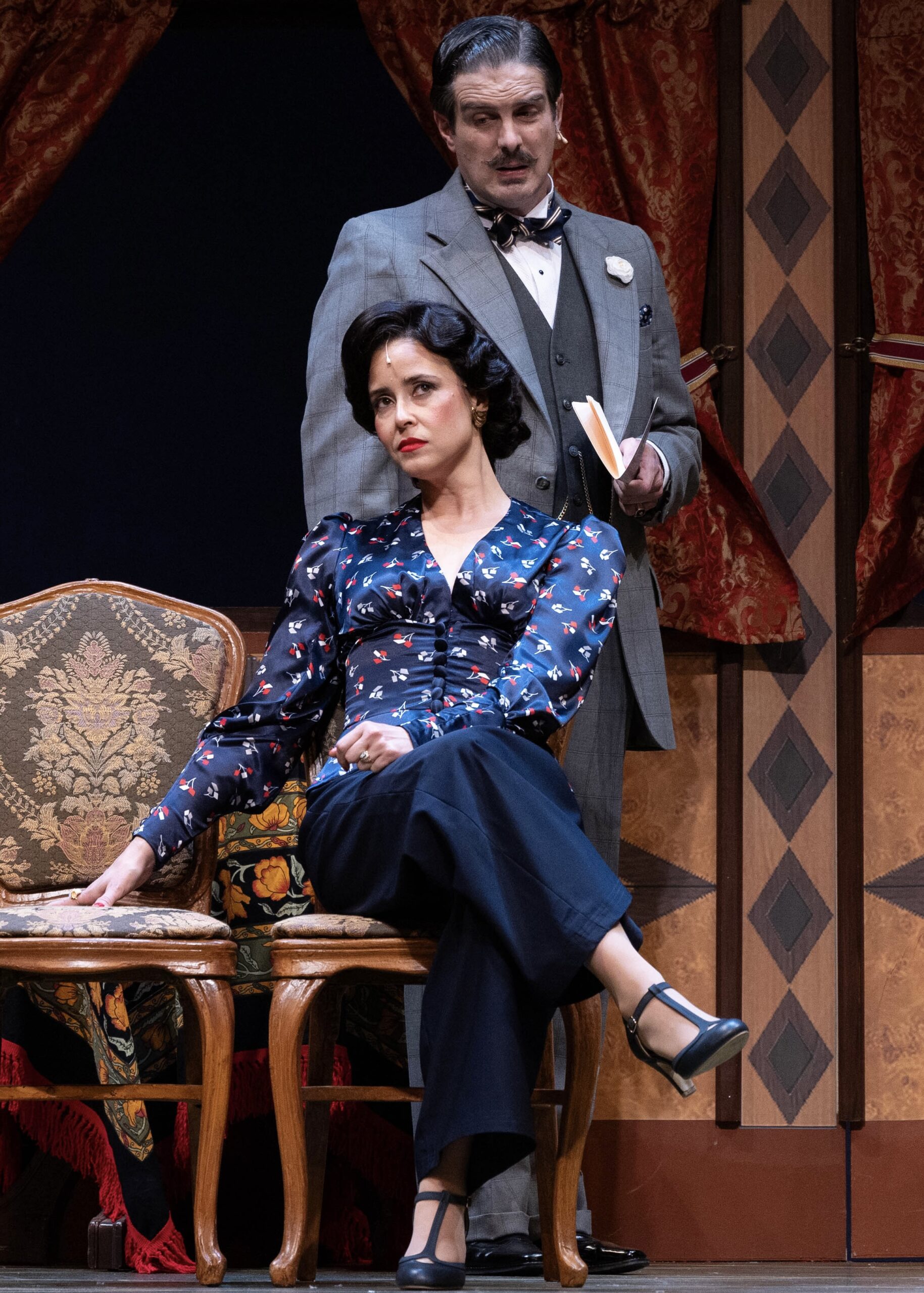
Gisela Chipe (seated) as Countess Andrenyi and John Tufts as Hercule Poirot. Photo by BW Productions.
The play was full of animated caricatures, but each actor in the cast revealed that these were all misrepresentations when the perfect plan for murder went off the rails. It is a credit to Anderson’s cohesive treatment of the production that the cast and crew put together such a potent show. I am stingy with my standing ovations, but this production of the Agatha Christie classic deserved one, and the crowd overwhelmingly appeared to agree. Murder on the Orient Express was such an impressive blend of fast paced humor and intense storytelling. Yet, it still managed to burn slowly enough to be interesting. Get tickets fast, because this train ride to intrigue won’t be in the station for long.

These reviews are made possible by a grant from the Salt Lake County Zoo, Arts, and Parks program.

